 | « Back to article | Print this article |
'In difficult times as now, the call of the village is all that these migrants can hear,' observes Vijaya Pushkarna.
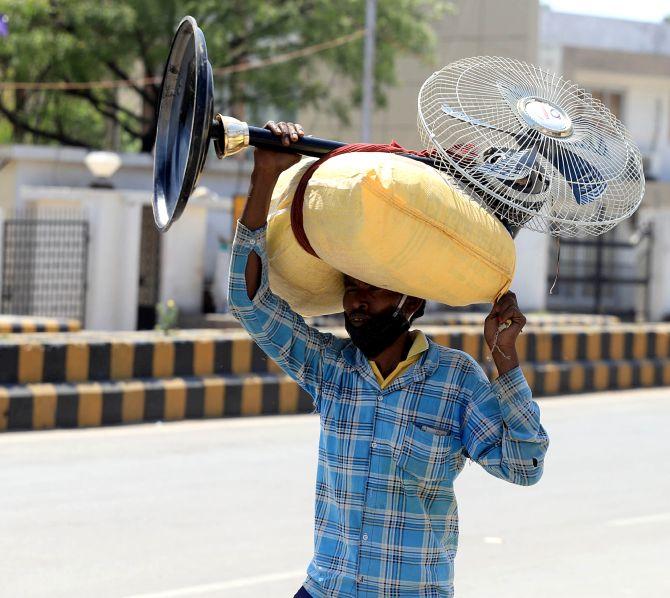
Five hours after Prime Minister Narendra Damodardas Modi announced the extension of the 21-day nationwide lockout, the police manning the Mehrauli-Badarpur road near Saket in south Delhi caught 55 migrant labourers trying to leave the city.
The police had learned from what happened on March 27 and 28 at East Delhi's Anand Vihar integrated transport depot.
Thousands of migrants had converged following rumours that buses and trains would take them back to Uttar Pradesh and Bihar, eventually forcing the government to do that -- in total violation of the lockdown.
So on April 14, the police summoned a couple of buses and dropped the migrants trying to escape out of the sealed borders at their homes in Saidulajab. These were not without a roof over their head or cash or food. In fact, they were trying to take back bags of rice and atta!
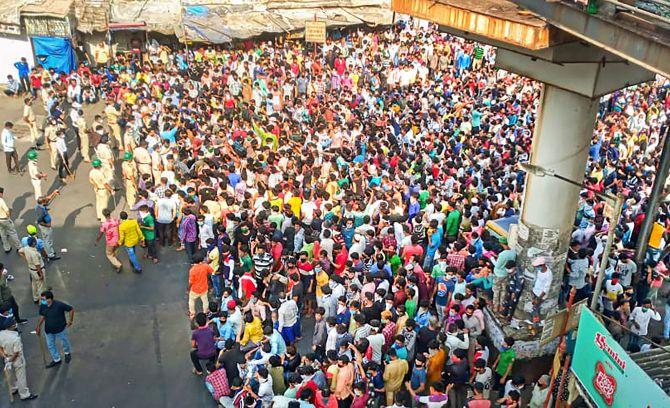
Atul Kumar Thakur, the deputy commissioner of police (south), revealed that as the police were talking them into staying put and abide by the lockdown, many said they wanted to go back to their villages, their families, and most notably, find a job there!
The Delhi location where they lived was not home.
As MSMEs express their inability to pay migrant labour their wages for the lockdown period, farmers and procurement agencies wonder how they will manage without the migrant labour who rushed back to their villages soon after the lockdown was clamped.
Finally, the value of the uncounted and unaccounted migrant labour has become boldly visible to everyone -- from families whose dependable domestic helps have gone, to industry bodies and government.
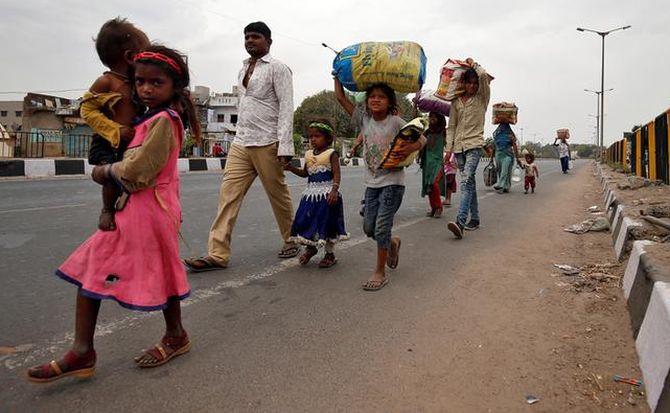
About four decades ago, frustrated members with small and shared land holdings in Bihar and eastern Uttar Pradesh went to the prosperous states of Punjab and Haryana, offered to work for a fraction of the going rate.
Soon they became indispensable, and for some operations -- like paddy transplantation --they remain so in spite of mechanization.
The two years before the Commonwealth Games 2010, in Delhi, huge machinery and very few men marked the construction sites as sports and other infrastructure came up in preparation for the event. There was a design behind it.
Experience of the Asiad 1982 projects showed that the labour that had been brought in construction was not so mechanised then to the capital stayed put, to earn a living wherever possible, however possible! They were seen as scum in the capital.
When they went back to the villages -- to cast their vote or for harvesting or a wedding -- they generally brought back more villagers to work in the city. They found jobs, primarily in the construction sector.
Big projects like the expanding Delhi Metro, the expressways and national highways that have made Delhi a world-class city are, however, largely the work of powerful, monstrous looking machines.
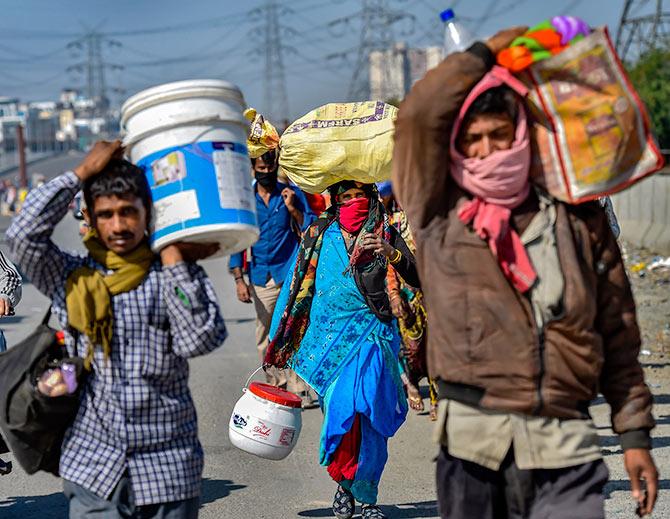
In difficult times as now, the call of the village is all that these migrants can hear.
And contrary to the way they were viewed post the Asiad 1982, now their urge to go back home has rattled urban India.
If the migrant labour manage to go back in large numbers, will they be missed?
Will they return?
Should they return?
What will be the impact of their decision on the economy, on development?
These and many other tough and yet relevant questions are what policy makers have to ask and answer as they work to make India's migrant labour count, for their contribution to the economy.
The time for doing that has come, and it is now.
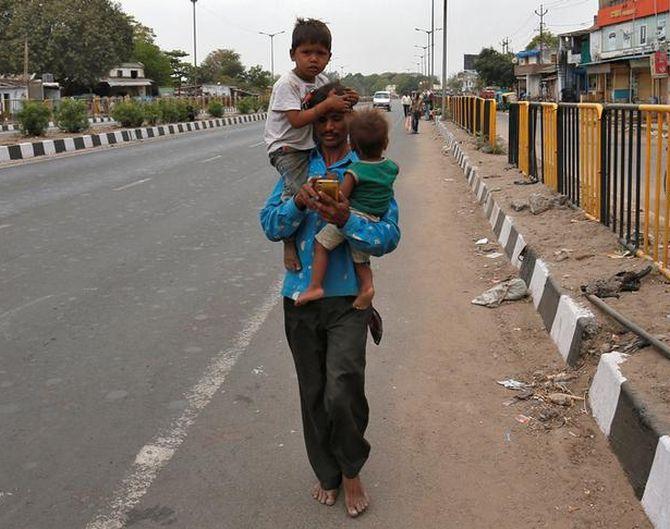
Policy analyst Devinder Sharma believes that agriculture was "deliberately killed" and farmers were by design "moved out of agriculture to participate in the building of the economy" by making farm incomes non remunerative.
The NITI Aayog, he says, points to real income growth in agriculture being less than half a per cent annually between 2011-2012 and 2015-2016, and in the next two years, it was near zero.
Citing reports of the OECD (Organisation for Economic Co-operation and Development) Sharma says that between 2000 and 2016, farmers suffered losses of Rs 45 lakh crores.
"If that had gone to them, why would they have run to the cities to work as migrant labour?" he asks.
The OECD's July 2018 Review of Agriculture in India looks, among other things, at what role will the small land holder have in agriculture.
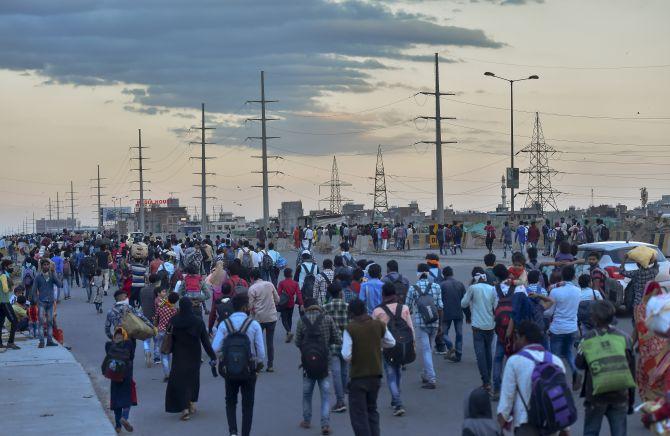
And in this context, the report calls for structural adjustments involving the transition of significant amounts of labour to other activities.
It also points out that with many of the current generation of agricultural workers having relatively low levels of education, they will only be able to transition out of agriculture if low skilled manufacturing, construction or services jobs become available.
But even ahead of this report, the migrant labour have done that -- left villages, agriculture and families -- to work in construction and other small areas in urban India.
But as a new truth of life dawns on them in the cities with sealed borders and factories locked down, that is exactly the kind of jobs migrants around the national capital are trying to run away from.
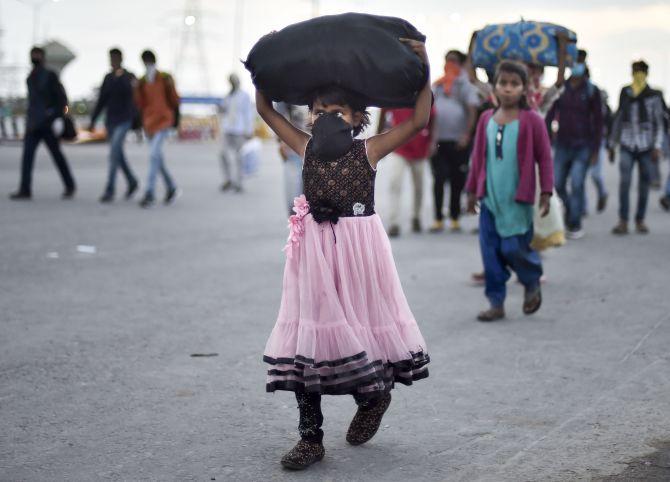
The impact of the lockdown on account of the coronavirus seems to suggest that farmers-turned-migrant labour also want to work from home where they will breathe fresh air instead of a dozen of them being cooped in tiny urban jhuggis. And feel the warmth and assurance that comes from the family.
Even if Prime Minister Modi's promise of doubling farm incomes by 2022 does not come true.